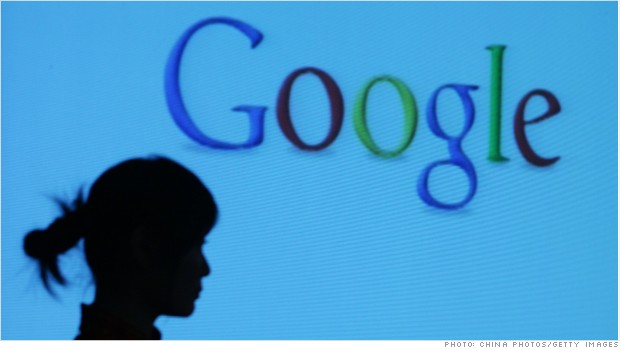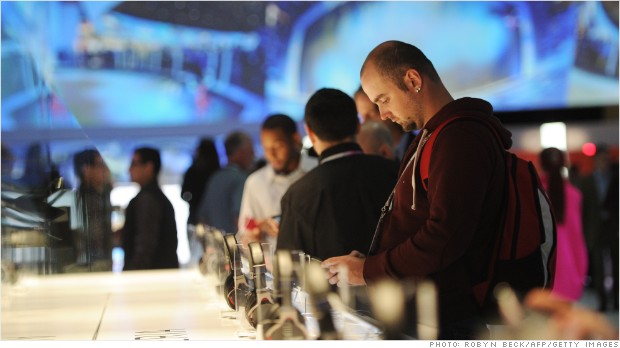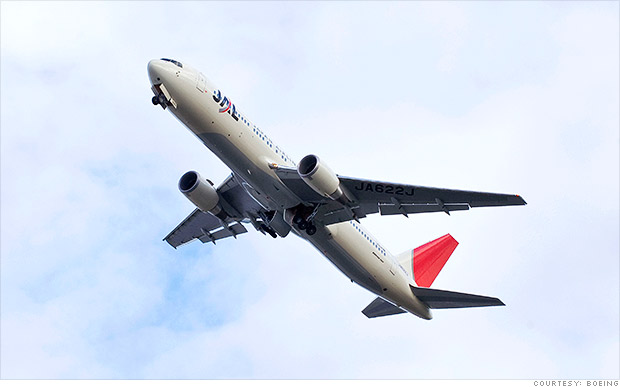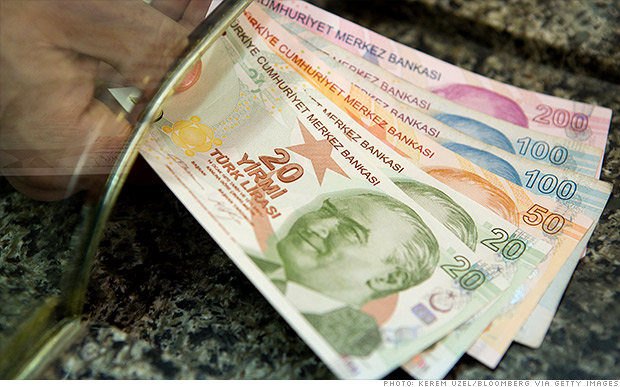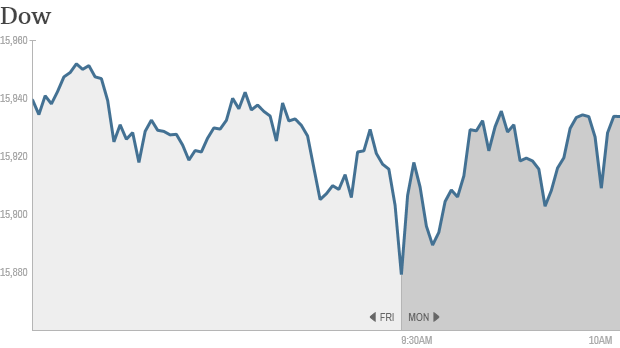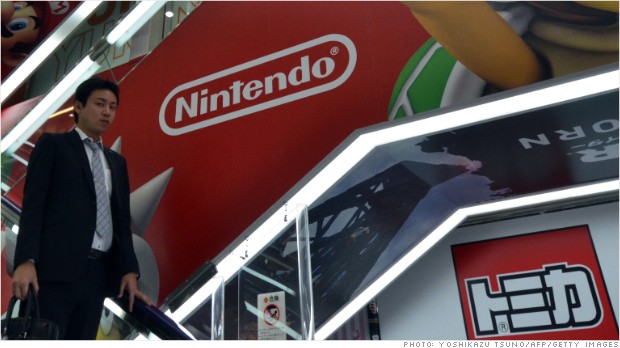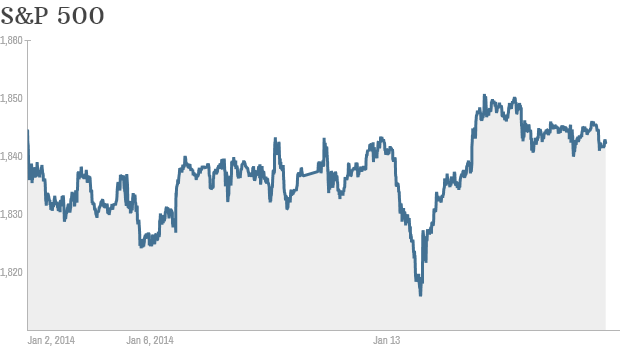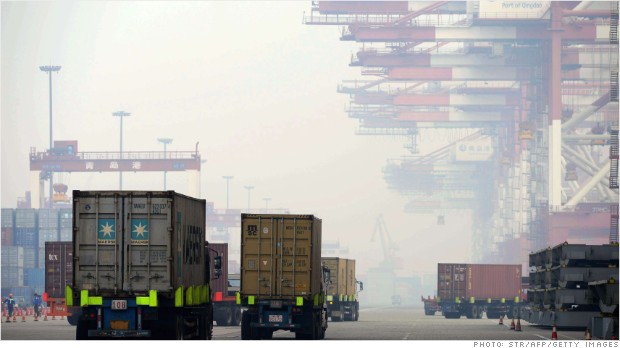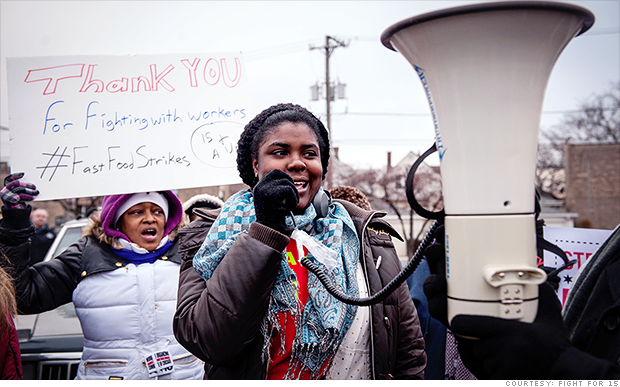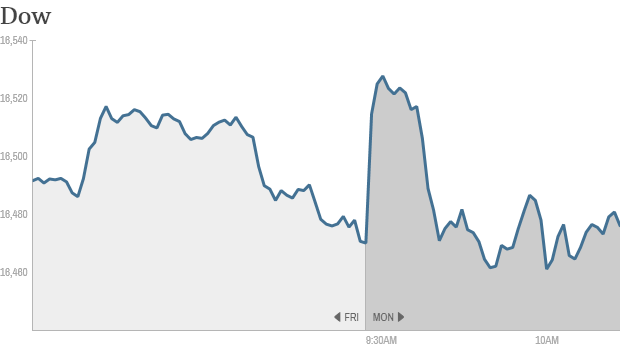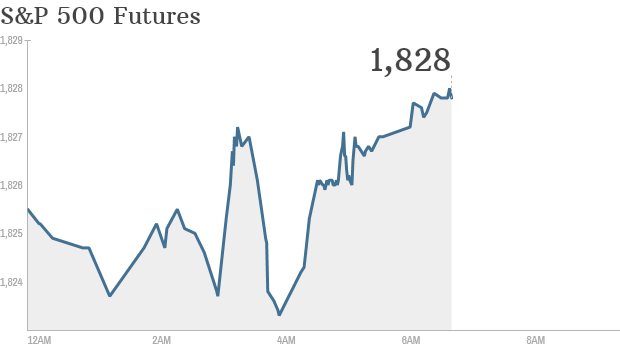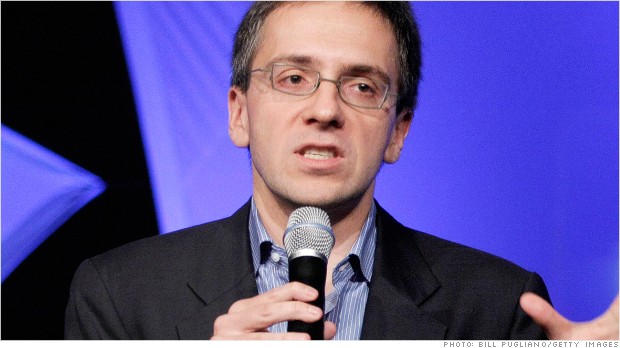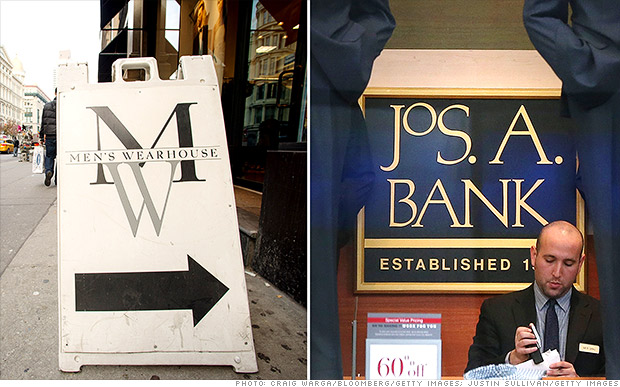
Bulk up on a forgotten asset -- cash.
NEW YORK (Money Magazine)
After a five-year rally that has more than doubled the value of the S&P 500, stock prices at least by one measure of valuation are among the frothiest in history. Speculation is back, as the use of borrowed money to invest is nearing pre-financial-crisis highs. And then there's the fact it's been nearly 2 1/2 years since stock prices fell significantly. Pullbacks of 10% or more typically occur at least once a year.
Normally when faced with overheated equities, you can simply sell some winners and buy more bonds, either to get you back to your target allocation or to invest more conservatively. That strategy paid off big in the 2000-02 bear market, when the S&P 500 lost 47% while government bonds maturing over four to 10 years returned 26%.
But what happens if both stocks and bonds are primed to deliver subpar returns? That appears to be the situation now. A big reason stocks have climbed so much is that the Federal Reserve has bought up more than $2 trillion in Treasury and mortgage bonds in recent years to try to boost growth by holding down long-term interest rates and thus promote risk taking.
So-called quantitative easing has worked, but it has also driven fixed income prices up and yields down. Doug Ramsey, chief investment officer for the Leuthold Group, says, "There's now joint overvaluation in U.S. stocks and bonds."
The immediate concern: Now that the Fed has started shutting off its spigot in the face of an improving economy, the chances of rising interest rates prompting a selloff in stocks and bonds inevitably increase. Shortly after the Fed ended its two smaller rounds of quantitative easing -- in 2010 and 2011 -- the S&P 500 declined 16% and 19%, respectively. (Bond investors discounted QE's impact then, but lately they've shown they're convinced.)
The bigger long-term worry: Above-average valuations mean the likelihood of disappointing returns over the next 10 years or so.
What do you do? If you have decades to ride out the market's ups and downs, you don't have to do anything.
But if retirement is closer than that, you want a strategy that offers some protection from a bad bear market and turns down the volatility in your portfolio at a time when you're unlikely to be richly rewarded for risk taking.
Jason Brady, a portfolio manager at Thornburg Investment Management, notes: "When the price of everything goes up, it stands to reason these investments become less attractive to own."
In this article, you'll learn not only about moves you can make within your stock and bond holdings to cut risk but also about the importance of re-embracing a long-forgotten asset class -- cash. Stocks don't rise 150% every five years; bond prices don't soar when interest rates rise. So prepare for skimpier returns and higher risk.
STOCKS: More expensive than you think
A popular way to tell if stocks are cheap or dear is to look at the market's price/earnings ratio using profit forecasts for the next 12 months. Based on this method, the S&P 500's P/E is 16, which is more than 15% higher than the market's long-run average.
That's worrisome, but here's what's truly scary. If you calculate the market's P/E based not on projected profits but on 10 years of averaged earnings -- a more conservative and more reliably predictive method championed by Yale finance professor Robert Shiller -- the S&P 500's ratio is actually above 25.
Over the past 130 years, there have been only a handful of periods in which the market's P/E has hit this level: 1901, 1928 to 1930, 1996 to 2002, and 2003 to 2007, just before the financial crisis. Each of those periods gave way to (or in the case of the irrational-exuberance era, included) a ferocious bear market.
This note of caution isn't about making a short-term market call. Those periods also show that stocks can remain at frothy levels for years.
Related: Where to make money in 2014
In the current case, the S&P 500 just topped 25 in November. "Sure, valuations can go higher from here," says Robert Arnott, chairman of the investment advisory firm Research Affiliates. "But that's a game I choose not to play."
That's because the long-term bet against the Shiller P/E is a loser. Since 1926, when the market's valuation has exceeded 25, the average inflation-adjusted annual return for stocks has been a mere 0.5% over the subsequent decade. (A five-year P/E calculated by the Leuthold Group yields a better, though still bad, result.) The average annual real return for stocks is about 7%.
Your best moves
Ease up on "Fed-dependent" stocks. That's what Mark Freeman, chief investment officer at Westwood Holdings Group, calls stocks that benefited most from the Fed's super-low rate policies.
Freeman says quantitative easing, by lowering the cost of capital dramatically, has driven investors toward smaller companies that tend to be heavy borrowers. Thus far, that has worked out fine. Small-company stocks, which had been outpacing shares of large companies since 2000, got a second wind after the Fed's latest bond-buying program started in the fall of 2012.
The problem is that valuations for small caps are way up. Historically, small stocks have traded at around the same P/E as blue chips, based on five years of average profits, according to the Leuthold Group. Today they're 25% more expensive.
While small stocks outperform large ones over long periods, this isn't the time -- or the price -- to be buying up the little guys.
Dial back your small-stock exposure, says Ramsey, by the amount they're overvalued -- say, 20% to 25%, and move that into blue chips. This is actually not a big step. Assuming you hold a fairly typical blend of mutual funds, for every $100 of your money invested in U.S. stocks, around $70 will be held in large-company shares and $30 in smaller names. A 25% reduction in this case works out to around an eight-percentage-point change.
Then trim your stock allocation five percentage points or so from sectors that have directly and disproportionately gained from artificially low yields. Among them: real estate, which got a boost from record low borrowing costs, and high dividend-paying utilities, which were considered an alternative source of income in a low-rate world.
Related: Quiz: Are you a markets whiz?
If you own a REIT or utility fund through a 401(k) or IRA, selling won't trigger taxes. Own them in a taxable account, though, and you'll have choices to make. You can offset capital gains by selling some emerging-market holdings, which are largely down over the past three years. If you don't have losses and don't want a tax bill, you can start putting new money elsewhere.
Freeman recommends shifting into shares of larger multinational companies with above-average sales and earnings growth. You can find these types of companies in T. Rowe Price Blue Chip Growth (TRBCX) and Primecap Odyssey Growth (POGRX), both on the MONEY 50 list of recommended mutual and exchange traded funds.
Move some money into foreign stocks. Sharon Hill, a portfolio manager with Delaware Investments, says relative to the U.S., foreign equities are downright attractively priced. Global stocks are selling at a 20% discount to domestic shares, even though historically they've traded on par with U.S. securities. So shifting out of U.S. stocks and into the broad foreign markets is a sound way to reduce risk, she says.
But do so within reason. Vanguard studied the usefulness of foreign stocks and found something interesting: While adding international exposure gradually reduces volatility in your portfolio, the diversification benefit starts to dissipate once your overseas weighting jumps above around 40%.
If you have only minimal international exposure, shift five to 10 percentage points toward overseas holdings using a broad-based fund such as Vanguard Total International Stock (VGTSX) or Dodge & Cox International Stock (DODFX), both in the MONEY 50. If you already keep more than a third of your equities abroad, go up to 40% but no more.
BONDS: This time they're not a safe bet
Look back over the major bear markets for stocks, and in almost every case bonds did an admirable job of limiting the damage. On several occasions, in fact, fixed income delivered double-digit gains. Yet with market interest rates at such low levels thanks to Fed policy, it's hard to imagine that bonds can offer you that kind of shelter this time.
Bull markets in stocks are usually killed by rising interest rates, which also crimp bond prices. In the past, however, bond yields were high enough to compensate you for the drop in value. For example, when the Fed lifted rates in 1973, which helped trigger the equity bear market of 1973-74, 10-year Treasury notes were yielding over 7%. So even though bond prices fell that year, intermediate government bonds returned nearly 5%.
Today the math simply doesn't work. If the 10-year note's interest rate was to rise by one percentage point, a broad-market bond fund would probably lose about 6% of its value. Tack on a yield of less than 3%, and you're losing money.
That's pretty much what happened last year when investors feared the Fed would start to taper its bond-buying program. And the average long-term government bond fund, which is very sensitive to interest rates, racked up a 12% loss.
Related: Tweak your bond mix in 2014
It's not just short-term returns you have to worry about. The Leuthold Group studied the historical performance of bonds and found that there is a simple rule of thumb: Whatever the yield on 10-year Treasuries currently is, that's about the annual total return you can expect from bonds over the next decade. Today that yield is a historically low 2.8%. That's around half the average return for bonds.
Your best moves
Lend less to Uncle Sam. You can diminish risks in your bond portfolio by taking 20% to 25% of your exposure to funds with big stakes in U.S. government debt and shifting that money into other segments of fixed income.
For instance, yields on municipal bonds look relatively attractive -- especially since the improving economy is strengthening state and city finances. So, too, do high-quality corporate bonds.
Don't buy a lot of junk. Just be careful with higher-yielding securities, such as junk bonds, strategists say. When yields are low, investors tend to plow money into higher-paying stuff. But eventually all that buying drives yields down, as we've seen in the past year. Now you're often not being paid enough for the extra credit risk you're taking, except possibly with debtors classified just slightly below investment grade.
It's not just the higher possibility of default that's a problem. "You take on a different level of risk that's more highly correlated with stocks," says Mary Ellen Stanek, director of asset management for Baird.
Indeed, U.S. government bonds often go up when stocks go down. Junk historically moves more or less in sync with equities. "At the end of the day," Stanek says, "you want your bond portfolio to truly behave like a bond portfolio when it most needs to."
CASH: Bulk up on a forgotten asset
Before the Federal Reserve under Alan Greenspan hammered interest rates into the ground starting in the 1990s, cash was a part of many prudent investors' portfolios. A savings account or money-market fund lowered portfolio volatility, provided income, and allowed holders to scoop up bargains when stocks fell.
Given today's stock and bond valuations and the fact that interest rates are bound to rise, "there's nothing wrong with pulling 10% off the table and sitting in cash," says James Stack, a market historian and editor of the InvesTech Research newsletter.
This is especially true, he says, for investors who are within 10 to 15 years of retirement or are already retired.
Younger investors with more time to recover from subpar returns don't have to play as much defense. But, Stack says, they may choose to go to cash to be opportunistic -- to jump on stocks once prices fall substantially.
Greg Schultz, a principal with Asset Allocation Advisors, thinks you can go even higher -- to around 15% cash, by reducing both stock and bond holdings. That may sound radical, but even at today's depressing cash yields, many successful portfolio managers keep 5% to 10% of their assets in cash when they can't find attractively priced investments to buy.
And there are plenty of things that a stash of cash can do for you.
Your best moves
You'll turn paper profits into actual ones. Since selling winners will trigger capital gains taxes, do it in your tax-sheltered 401(k)s and IRAs as part of your rebalancing, along with the stock and bond moves suggested above. Alternatively, you can simply start putting money into an online-only bank savings account that now pays close to 1% interest and build up a position during the year.
You can hedge your bond holdings. In a rising interest rate environment, cash will progressively gain value at the same time as some of your bonds are apt to lose ground.
You'll still be in the game. Even if the stock market continues to climb, having a 10% stake in cash won't prevent you from taking part in the gains. A balanced portfolio with a 60% stock/40% bond allocation, for instance, returned 15.3% last year. Had you shifted that to a 55% stock/35% bond/10% cash allocation, you'd have earned one point less.
And you will stay strong. Because cash will cut losses and volatility, it just might help you stay the course in the rest of your portfolio, says Schultz. "Yes, there's an opportunity cost, but common sense tells you that if things are richly priced today, there will come a time when they will be cheaper," he says.
Money in the bank will help you handle the selloff while positioning yourself for the eventual rebound. 
What, you worry?
There's a troubling sign that can't be ignored -- P/E ratios are above 25. This bodes poorly for future stock performance.
| Average | 0.5% |
| Worst | -6.1% |
| Best | 6.3% |
NOTES: P/Es based on 10-year profits. SOURCE: AQR Capital
First Published: January 6, 2014: 9:29 AM ET
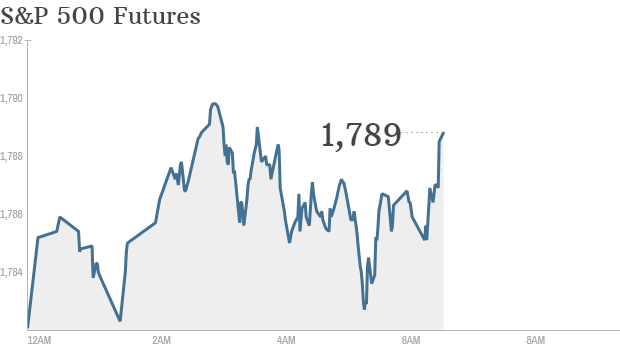
![]()
